When I left my career as a middle school principal, I gained some immediate benefits. I traded in my neckties for t-shirts and long meetings for behind-the-scenes tours. Recently, though, I learned of another great switcheroo that came when I left my job in public education to pursue travel writing full-time: Cafeteria mini-corn dogs have been replaced with delicious Parmigiano Reggiano cheese.
The Chef & The Dish
When Jenn Nicken of The Chef & The Dish asked us to take part in the complimentary cooking lesson that Ann wrote about HERE, I was definitely interested. And when she explained that all four of the recipes would feature Parmigiano Reggiano cheese, I did a happy dance.
All my life, I’ve loved parmesan cheese. It tops pizza, spaghetti, lasagna, and even popcorn perfectly. But, as I quickly learned, our cooking experience wouldn’t be with tiny salty pellets of cheese product from a round plastic container. Instead, we’d be working with the real deal, the king of cheeses, Parmigiano Reggiano. At the beginning of our cooking class with The Chef & The Dish, our chef, Paola Martinenghi, made sure we knew just how special this ingredient is.
Here are 5 things she taught us about the most delicious cheese.
1. Parmigiano Reggiano cheese is NOT parmesan (it’s way better)
The world is full of cheese called parmesan. This name simply means that the cheese was made in the style of Parmigiano Reggiano. What makes Parmigiano Reggiano cheese special is that the cheese maker must follow a very specific set of rules that have been around for generations. A consortium of cheese makers governs these rules which are designed to produce a consistently high-quality product that consumers can trust.
First, the cheese can only be produced in a certain part of Italy. That region has the necessary climate to produce the perfect cheese of this style. Then, a specific process must be followed. At the end, every cheese wheel undergoes an inspection. Those that pass are marked with dots that say Parmigiano Reggiano and are branded with a seal on the rind of the wheel to show it’s authentic.

A pile of Parmigiano-Reggiano cheese grated. Note the rind with the dots showing the cheese is authentic.
If you want to buy real Parmigiano Reggiano cheese, make sure any piece you purchase still has the rind on it and that you can see the dots. Otherwise, you might well be buying an imitation. And trust me, after trying the real stuff and the pretend side-by-side, there is a difference you can clearly taste.
2. It takes a huge quantity of the right milk
All cheese starts with milk, and that’s true for Parmigiano Reggiano cheese. Cows that produce the milk for the cheese must live in a certain area of Italy and be grass-fed. Only. The milk they produce is used unpasteurized.
The cows are milked twice a day. The evening milking is put into copper vats, and the fat is skimmed off. The next morning’s milking is added creating a part skim, part whole milk mixture that then moves on to the cheese making process. By now, each vat has more than 260 gallons of milk, though all that milk will produce only two wheels of cheese.
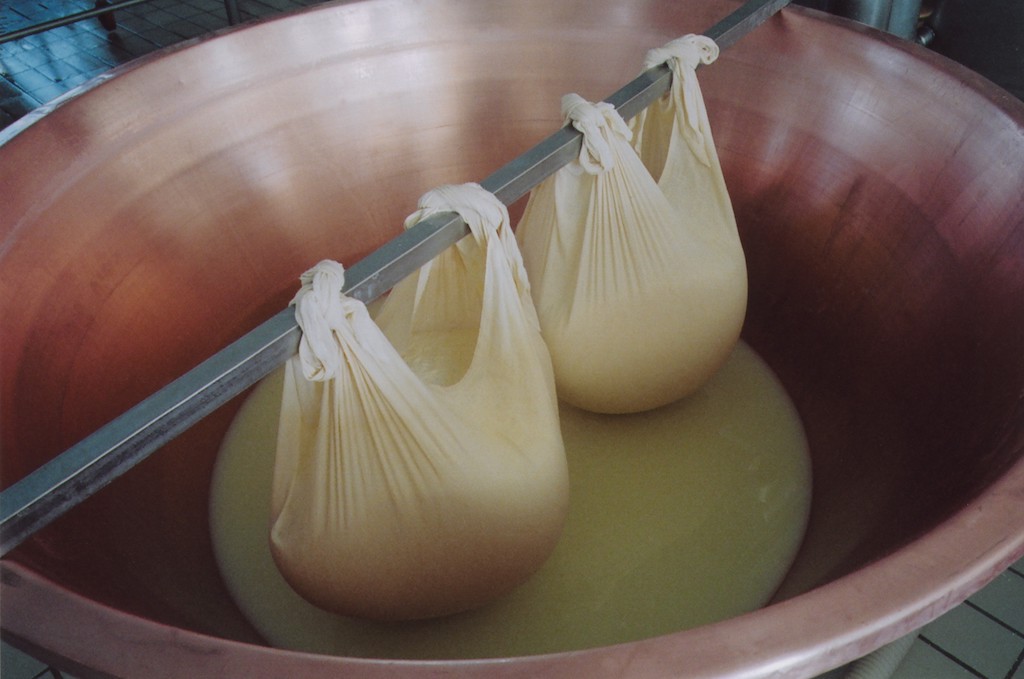
Each vat of 260 gallons of milk produces only two wheels of cheese. These are called the “twins.” (Photo courtesy Parmigiano Reggiano)
During the cheese making process, natural ingredients are added to cause the curd of the milk to separate from the whey. This curd is then put in to molds and wrapped in a belt that leaves the distinctive Parmigiano Reggiano dot markings on the rind. The whey of the milk isn’t wasted. Instead, it’s fed to pigs. This may well be part of the reason why prosciutto di Parma is so delicious.
3. The cheese takes a swim
The next step is to put the new cheese wheels in a vat of salt water. It floats around and is turned regularly, so that the wheel can absorb salt. The cheese will spend 20 days in this magic brine.
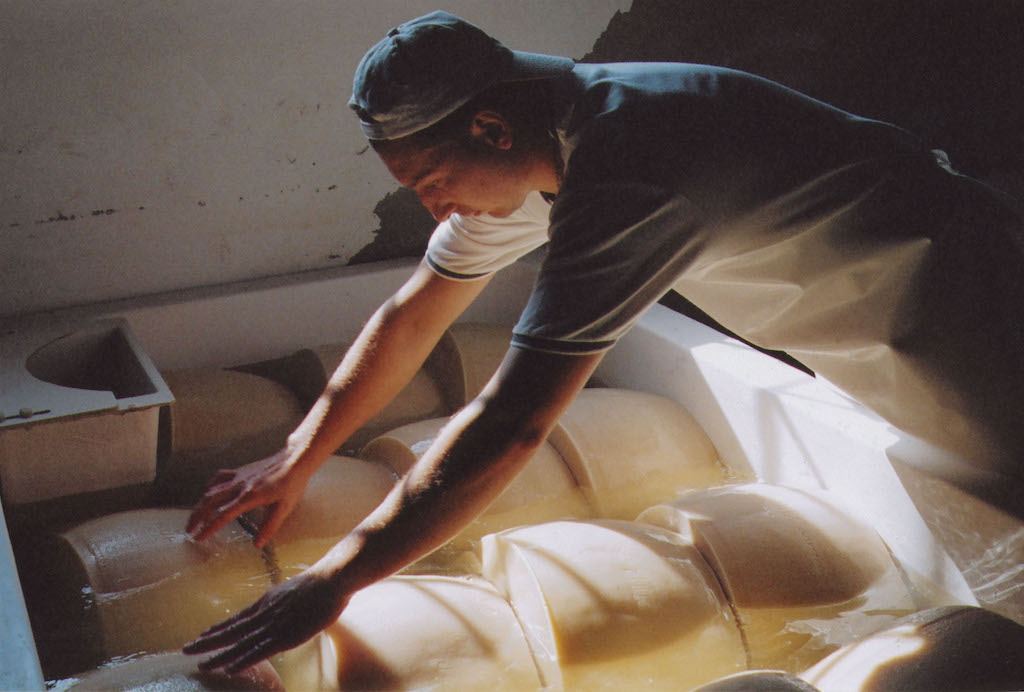
A worker turning wheels of Parmigiano-Reggiano cheese in a vat of salt water. (Photo courtesy Parmigiano Reggiano)
4. Aging properly is key
Then, the cheese wheels are put on long wooden shelves in a large room to age. Because humidity is different from the front of the shelves to the back, the cheeses are turned regularly. According to Chef Paola, there are enough shelves to go 20 or more cheeses high meaning each row might have more than 1,000 cheese wheels aging in it.
5. Then, the final exam
After one year of aging, each cheese wheel is inspected to see if it meets the requirements to be called Parmigiano Reggiano cheese. Someone from the consortium comes and taps the wheels with a hammer, listening for imperfections. If the inspector is satisfied, the cheese wheel is branded with the seal of the consortium, and that wheel is officially Parmigiano Reggiano cheese. If it does not pass inspection, the dots are removed and the cheese is sold as plain old parmesan cheese.

An expert inspects the wheel of cheese by tapping it with a hammer while listening for imperfections. (Photo courtesy Parmigiano Reggiano)
After hearing all this, I tasted the cheese and delighted in the explosion of pure deliciousness that filled my mouth. Last summer, when we traveled to Italy, we marveled at the quality and flavor of the food everywhere we went.
All over Italy, we met with wine makers, bakers, and butchers. As each explained her/his craft, we learned they take no shortcuts. They simply do things the old fashioned-way, even if it takes a little longer or costs a little more. Our experience with The Chef & The Dish reinforced this idea. Sure it might be a complicated process to make Parmigiano Reggiano cheese. Yes, it might take longer to produce than other mass-produced cheeses. But in the end, all of the attention to detail creates a product that is of incredibly high quality that adds so much to food. The extra effort is definitely worth it.
While our cooking experience with The Chef & The Dish was complimentary, the opinions and our newfound love for Parmigiano Reggiano cheese are our own.
PIN FOR LATER

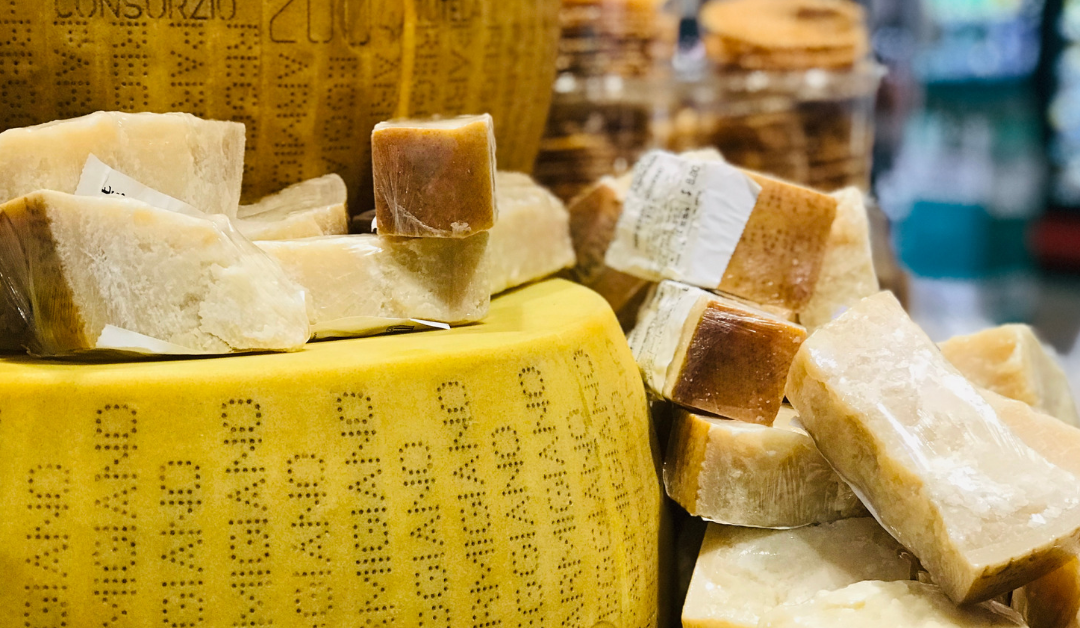
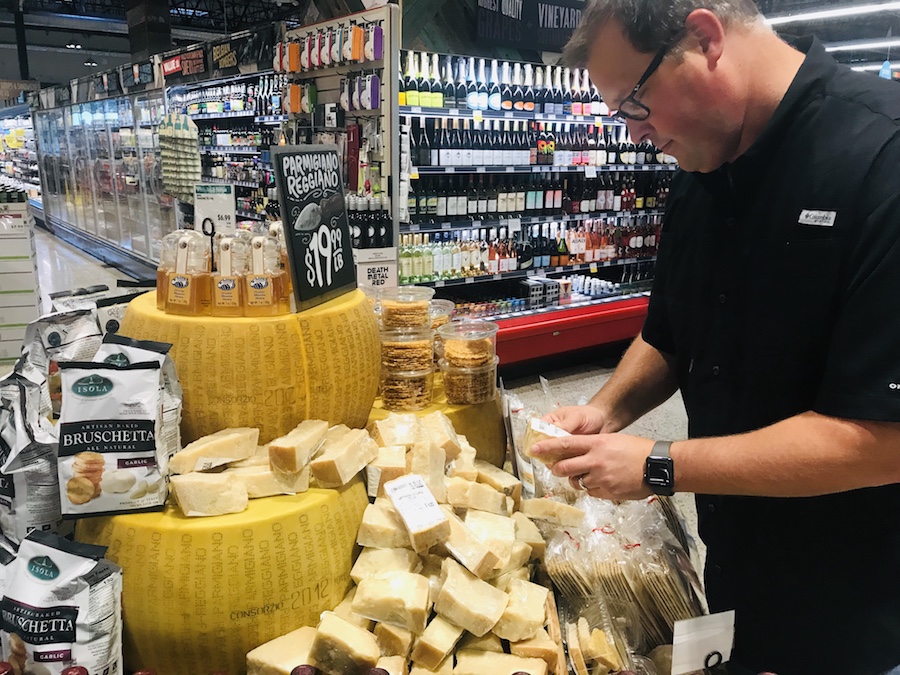
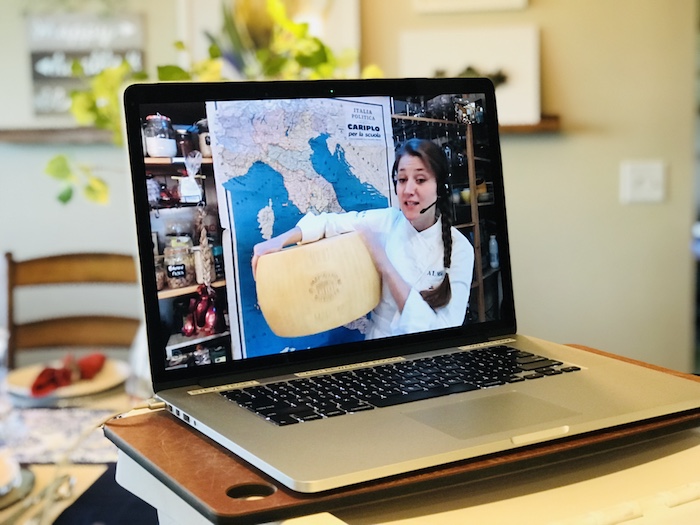
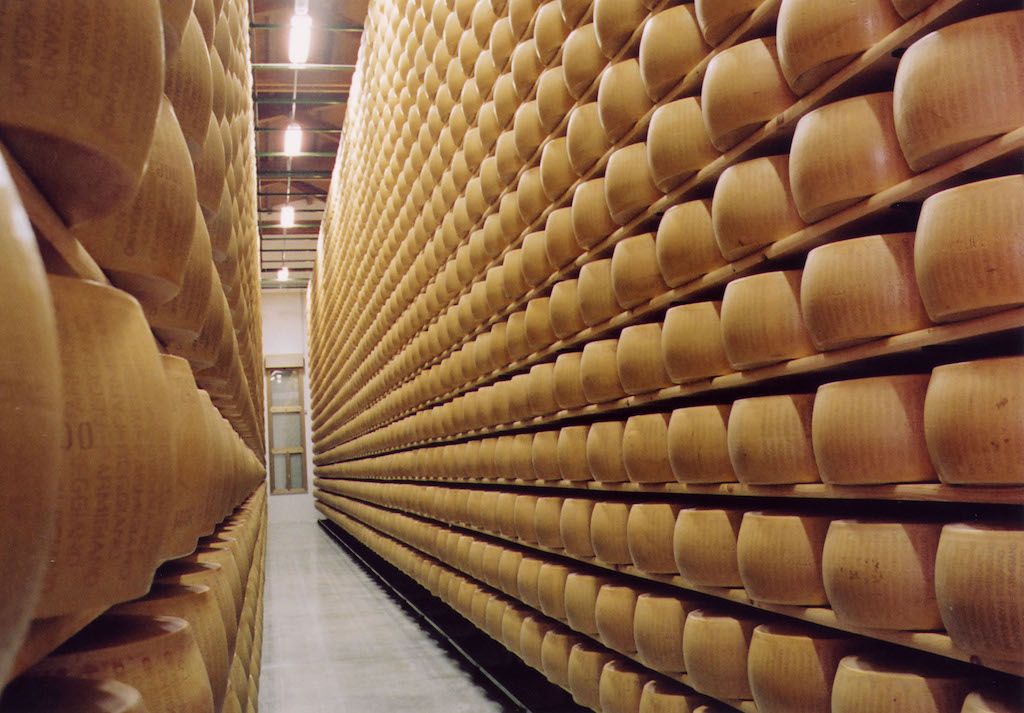

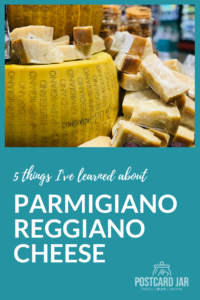






Did you get to go to the warehouse in Italy where the wheels are aging? It is a fantastic sight. Many many European cheeses have a similar story of their production and handling. I could go on & on. I sold Specilty Cheeses to retail outlets. It was a marvelous job.
Wendy
We have not been there yet, but after this experience we definitely want to go visit. Plus, we LOVE cheese! The pictures in our story were courtesy from Parmigiano Reggiano cheese.